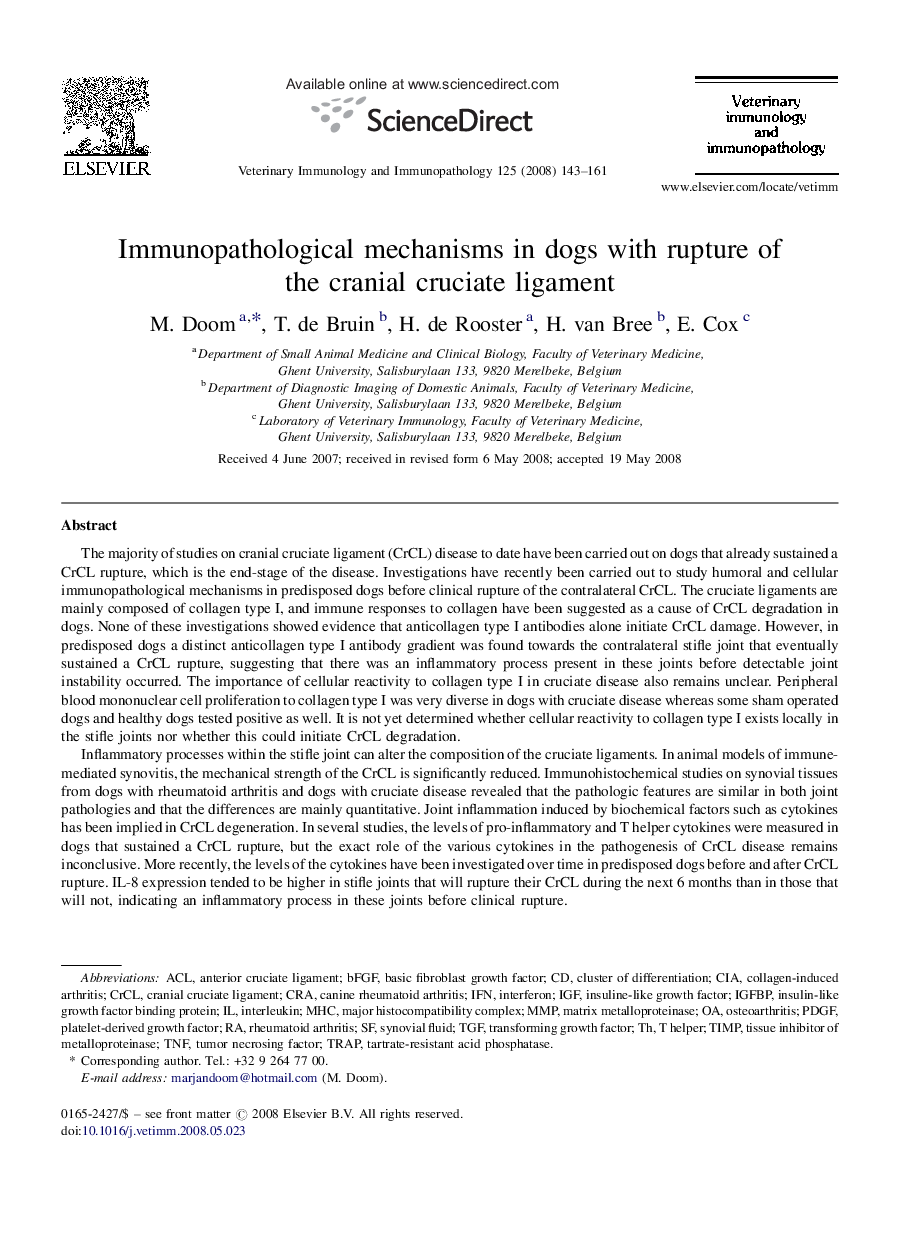| کد مقاله | کد نشریه | سال انتشار | مقاله انگلیسی | نسخه تمام متن |
|---|---|---|---|---|
| 2463035 | 1555096 | 2008 | 19 صفحه PDF | دانلود رایگان |

The majority of studies on cranial cruciate ligament (CrCL) disease to date have been carried out on dogs that already sustained a CrCL rupture, which is the end-stage of the disease. Investigations have recently been carried out to study humoral and cellular immunopathological mechanisms in predisposed dogs before clinical rupture of the contralateral CrCL. The cruciate ligaments are mainly composed of collagen type I, and immune responses to collagen have been suggested as a cause of CrCL degradation in dogs. None of these investigations showed evidence that anticollagen type I antibodies alone initiate CrCL damage. However, in predisposed dogs a distinct anticollagen type I antibody gradient was found towards the contralateral stifle joint that eventually sustained a CrCL rupture, suggesting that there was an inflammatory process present in these joints before detectable joint instability occurred. The importance of cellular reactivity to collagen type I in cruciate disease also remains unclear. Peripheral blood mononuclear cell proliferation to collagen type I was very diverse in dogs with cruciate disease whereas some sham operated dogs and healthy dogs tested positive as well. It is not yet determined whether cellular reactivity to collagen type I exists locally in the stifle joints nor whether this could initiate CrCL degradation.Inflammatory processes within the stifle joint can alter the composition of the cruciate ligaments. In animal models of immune-mediated synovitis, the mechanical strength of the CrCL is significantly reduced. Immunohistochemical studies on synovial tissues from dogs with rheumatoid arthritis and dogs with cruciate disease revealed that the pathologic features are similar in both joint pathologies and that the differences are mainly quantitative. Joint inflammation induced by biochemical factors such as cytokines has been implied in CrCL degeneration. In several studies, the levels of pro-inflammatory and T helper cytokines were measured in dogs that sustained a CrCL rupture, but the exact role of the various cytokines in the pathogenesis of CrCL disease remains inconclusive. More recently, the levels of the cytokines have been investigated over time in predisposed dogs before and after CrCL rupture. IL-8 expression tended to be higher in stifle joints that will rupture their CrCL during the next 6 months than in those that will not, indicating an inflammatory process in these joints before clinical rupture.This review provides a comprehensive overview of all possible implications of humoral and cell-mediated immune responses published in dogs with cruciate disease together with publications from human joint diseases. Furthermore, this review highlights recent findings on cytokines and proteinases in the accompanying joint inflammation.
Journal: Veterinary Immunology and Immunopathology - Volume 125, Issues 1–2, 15 September 2008, Pages 143–161